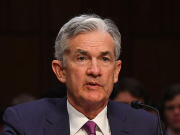Franklin Templeton Investment Strategist Christy Tan: China’s Consumption Triangle – A Possible Trinity
April 2023 – This is an expert commentary on the China economy & growth opportunities led by demand in consumption, high savings rate & government policies – China’s Consumption Triangle – A Possible Trinity by Christy Tan, who is the Investment Strategist at Franklin Templeton Institute. Franklin Templeton (Franklin Resources) is one of the largest asset manager in the world with around $1.4 trillion AUM (Assets under Management).
 Franklin Templeton – Franklin Resources, Inc. is a global investment management organization with subsidiaries operating as Franklin Templeton and serving clients in over 155 countries. Franklin Templeton’s mission is to help clients achieve better outcomes through investment management expertise, wealth management and technology solutions. Through its specialist investment managers, the company offers boutique specialization on a global scale, bringing extensive capabilities in equity, fixed income, multi-asset solutions and alternatives. With offices in more than 30 countries and approximately 1,300 investment professionals, the California-based company has 75 years of investment experience and approximately $1.4 trillion in assets under management as of January 31, 2023.
Franklin Templeton – Franklin Resources, Inc. is a global investment management organization with subsidiaries operating as Franklin Templeton and serving clients in over 155 countries. Franklin Templeton’s mission is to help clients achieve better outcomes through investment management expertise, wealth management and technology solutions. Through its specialist investment managers, the company offers boutique specialization on a global scale, bringing extensive capabilities in equity, fixed income, multi-asset solutions and alternatives. With offices in more than 30 countries and approximately 1,300 investment professionals, the California-based company has 75 years of investment experience and approximately $1.4 trillion in assets under management as of January 31, 2023.
Under the Macroscope: China’s Consumption Triangle – A Possible Trinity
Summary

Christy: Hopes that China will meet or even exceed 5% real gross domestic product (GDP) growth this year are warranted. The key driver will be consumption, fueled by excess household savings and a pro-business policy stance. But a faster and more durable recovery will require additional policy measures, not yet in place, to structurally increase the share of consumption in Chinese GDP. China’s economic divergence from slowing growth and recession in the developed world bodes well for China’s corporate profits and cash flows, making it an attractive source of macroeconomic diversification and a compelling destination for equity and fixed income flows over the remainder of 2023.
” key driver will be consumption, fueled by excess household savings and a pro-business policy stance. But a faster and more durable recovery will require additional policy measures, not yet in place “
1) 3 years of isolation: first in, last out

Christy: Now that COVID restrictions have ended, foreign investors can get a true pulse on the ground about China from within China. Here are 3 of our observations that form the consumption triangle:
- China’s domestic consumption is the biggest upside opportunity.
- China’s new administration may focus on a consumption-led growth model.
- There is likely a greater alignment between government spending and consumer spending.
” China’s domestic consumption is the biggest upside opportunity “
2) The mood on the ground is optimistic, with a tinge of caution
Christy: The confidence that China will attain more than 5% GDP growth and that Purchasing Managers’ Index (PMI) will stay above 50 this year are strong. However, the caution part comes from the observation that, post-pandemic, while domestic consumption is firmly in the driver’s seat, the foot is not on the accelerator. To put domestic consumption into high gear, policymakers should look to introduce measures to address a few speedbumps, namely:
- a 20-year high in propensity to save, that may translate to increased consumption,
- encourage policies that raise household income, and
- support a steady expansion of middle-income groups.
China’s gross savings rate is one of the highest in the world (at 45.5% of GDP) and household savings surged by over US$2.5 trillion in 2022. These are precautionary savings during unprecedented times of dynamic Zero-COVID policy that forced millions to stay indoors, sometimes for months at a time. Delaying home purchases and withdrawing from the financial markets led to an accumulation of precautionary savings. I believe that this form of savings will be reduced when savers feel more assured about income and job prospects ahead.
Simply put, China’s domestic consumption will be the biggest upside opportunity for overall growth performance in the next six to 12 months. This has been a proven thesis, as between 2010 and 2019, when:
- Private consumption as a share of GDP went up from 34% to 39%, even though household disposable income as a share of GDP barely budged during the same period.
- Household savings as a share of disposable income declined from 42% in 2010 to less than 35% in 2019
Part of this was due to a strengthened social safety net, with the government spending on items like health care, retirement and unemployment benefits, encouraging citizens to consume instead of saving for the future or for a medical emergency. We are starting to see some green shoots, based on the recent People’s Bank of China’s (PBoC) Urban Depositor Survey. While many Chinese residents are inclined toward more saving, the percentage has fallen since the reopening of the economy in December 2022, and those that prefer to invest has increased.
” China’s gross savings rate is one of the highest in the world (at 45.5% of GDP) and household savings surged by over US$2.5 trillion in 2022 “
3) China’s new administration may focus on a consumption-led growth model

Christy: There are signs that the new administration may renew their focus on a consumption-led growth model, which will require expanding household disposable income and further strengthening of the social safety net. China just announced it is reducing tax and fee burdens for businesses by US$261.6 billion this year, and extending existing tax and fee preferential policies, which are expected to reduce businesses costs by another US$173 billion With this, Beijing has extended tax cuts amounting to 1% of GDP through 2024, with the consumer portion making up almost half of the cuts (about 0.4% of GDP), and the policy room for further expansion is large.
Furthermore, the new private pension scheme that was launched in 2022 is a major initiative that will provide attractive long-term growth opportunities for asset managers with an onshore presence in China. In addition, we expect Hong Kong’s stock market to benefit from potential South-bound asset flows through the Stock Connect. The growth opportunities are unmistakable, and the private pension market is projected to grow from US$300 billion currently to US$1.7 trillion by 2025. As the market grows, private pension products in China will increasingly invest in Hong Kong equities through the Shanghai-Shenzhen-Hong Kong Stock Connect.
For long-term investors, investment opportunities in businesses that drive automation will be attractive, in our analysis. Automation can help address higher wage costs and an aging population.
” For long-term investors, investment opportunities in businesses that drive automation will be attractive “
4) Alignment between government spending and consumer spending

Christy: Amid the banking sector stresses in the United States and Europe, and the monetary policy straitjackets of central banks in developed economies, China stands out as a relative “safe haven,” equipped with a growth premium, minimal systemic risks within the domestic banking and real estate sectors, and a new leadership team led by Premier Li Qiang who should be pro-business. As such, look out for pro-business, pro-private sector and pro-Foreign Direct Investment (FDI) policy initiatives in the coming months.
” look out for pro-business, pro-private sector and pro-Foreign Direct Investment (FDI) policy initiatives in the coming months “
5) Household balance sheets on the mend but developers are still facing demolition risks
Christy: Beyond the possible trinity of the consumption triangle, investors are acutely aware of the other knowns and unknowns, related to the impact of housing supply and prices on both household perceptions of risk and China’s macro policy. We are less concerned as housing as a percentage of Chinese household’s net worth has declined from 60% in 2000 to 49% in 2019,
Our calculations suggest that the households’ net worth would be intact should house prices fall by 20% from 2019 levels. Furthermore, recent indicators have shown that the falling interest-rate environment in China has prompted a rush in prepayments of mortgage loans instead of making new purchases. Homeowners borrowed cheaper consumer goods loans to reduce mortgage loans that were taken at higher interest rates. Despite the cut in mortgage rates, outstanding mortgages has plateaued at around US$5.7 trillion in 2022.
” falling interest-rate environment in China has prompted a rush in prepayments of mortgage loans instead of making new purchases “
China may be in a sweet spot to further ease the “Three Red Lines” regulatory criteria for real estate developers, but it is not prudent to do so. These regulations are the bitter pills to reduce the debt risks of real estate companies, and accompanied by other supportive measures, promote the industry’s transition to a more stable development model. That said, while real estate will remain one of the key pillars of China’s growth model, and the sector is bottoming out, some of the recent defaults in China’s high-yield USD notes (which are dominated by real estate firms) have caused heightened caution among foreign investors. However, it is important to differentiate between private developers and the govern- ment-owned builders. The former faces the greater risk that the recovery in property prices and sales may not be in time to ease the cash crunch.
6) Globally, it’s downhill from here, but the slope matters

Christy: As China’s push for growth in domestic consumption, potentially in services (53.5% of GDP), the United States and other Western countries are tipping into recession over the next 12 months. From an economic standpoint, trade remains the most obvious channel through which weakening external demand can impact China’s economy. An examination of China’s exports to the United States shows that all three US recessions in the past two decades—in 2001 after the dotcom bubble burst, in 2008–2009 during the subprime crisis and in early 2020 immediately after the pandemic broke out—have coincided with sharp declines in China’s shipments to the United States.
A few scenarios worth considering, in the case of a growth slowdown (but no recession) in the United States and Europe, China’s exports to the two markets will accordingly register slower growth rates. This will see its export contribution to GDP growth fall by half to around 10% of 2021 GDP. In the case of the two economies slipping into mild recession, China’s exports contraction may shave 0.3 per cent off GDP in the next 12 months. But if the United States and Europe fall into deep recession, the export shock alone could potentially reduce China’s 2023 GDP by one percentage point
As with past US recessions, there are reasons to believe that domestic demand-driven economies and companies will be more resilient, China and Chinese corporates included. Underlying the 5% official GDP growth estimate this year is strong corporate earnings growth estimates within the MSCI China Index (20.7%) and Shanghai Composite Index (26.8%). Thus, in our opinion, China’s economic divergence from slowing growth and recession elsewhere bodes well for making China an attractive source of macroeconomic diversification and a compelling destination for equity and fixed income flows over the remainder of 2023.
A final point about recession risk is that a major global economic shock will trigger the Chinese government to implement a strong fiscal policy response to support aggregate demand. This brings us back to the consumption trinity and the importance of bolstering domestic demand to a position of reasonable strength as global growth looks set to head into a chilly winter.
” recession risk – major global economic shock will trigger the Chinese government to implement a strong fiscal policy response to support aggregate demand “
This is an expert commentary on China economy & growth opportunities – China’s Consumption Triangle – A Possible Trinity by Christy Tan, who is the Investment Strategist at Franklin Templeton Institute.
WHAT ARE THE RISKS?
All investments involve risks, including possible loss of principal. The value of investments can go down as well as up, and investors may not get back the full amount invested. Bond prices generally move in the opposite direction of interest rates. Thus, as prices of bonds in an investment portfolio adjust to a rise in interest rates, the value of the portfolio may decline. Stock prices fluctuate, sometimes rapidly and dramatically, due to factors affecting individual companies, particular industries or sectors, or general market conditions.
Investments in foreign securities involve special risks including currency fluctuations, economic instability and political developments. Investments in emerging markets, of which frontier markets are a subset, involve heightened risks related to the same factors, in addition to those associated with these markets’ smaller size, lesser liquidity and lack of established legal, political, business and social frameworks to support securities markets. To the extent a strategy focuses on particular countries, regions, industries, sectors or types of investment from time to time, it may be subject to greater risks of adverse developments in such areas of focus than a strategy that invests in a wider variety of countries, regions, industries, sectors or investments.
IMPORTANT LEGAL INFORMATION
This material is intended to be of general interest only and should not be construed as individual investment advice or a recommendation or solicitation to buy, sell or hold any security or to adopt any investment strategy. It does not constitute legal or tax advice. This material may not be reproduced, distributed or published without prior written permission from Franklin Templeton. The views expressed are those of the investment manager and the comments, opinions and analyses are rendered as of the publication date and may change without notice. The underlying assumptions and these views are subject to change based on market and other conditions and may differ from other portfolio managers or of the firm as a whole. The information provided in this material is not intended as a complete analysis of every material fact regarding any country, region or market. There is no assurance that any prediction, projection or forecast on the economy, stock market, bond market or the economic trends of the markets will be realized. The value of investments and the income from them can go down as well as up and you may not get back the full amount that you invested. Past performance is not necessarily indicative nor a guarantee of future performance. All investments involve risks, including possible loss of principal. Any research and analysis contained in this material has been procured by Franklin Templeton for its own purposes and may be acted upon in that connection and, as such, is provided to you incidentally. Data from third party sources may have been used in the preparation of this material and Franklin Templeton (“FT”) has not independently verified, validated or audited such data. Although information has been obtained from sources that Franklin Templeton believes to be reliable, no guarantee can be given as to its accuracy and such information may be incomplete. or condensed and may be subject to change at any time without notice. The mention of any individual securities should neither constitute nor be construed as a recommendation to purchase, hold or sell any securities, and the information provided regarding such individual securities (if any) is not a sufficient basis upon which to make an investment decision. FT accepts no liability whatsoever for any loss arising from use of this information and reliance upon the comments, opinions and analyses in the material is at the sole discretion of the user. Products, services and information may not be available in all jurisdictions and are offered outside the U.S. by other FT affiliates and/or their distributors as local laws and regulation permits. Please consult your own financial professional or Franklin Templeton institutional contact for further information on availability of products and services in your jurisdiction.
About Franklin Templeton
 Franklin Resources, Inc. [NYSE:BEN] is a global investment management organization with subsidiaries operating as Franklin Templeton and serving clients in over 155 countries. Franklin Templeton’s mission is to help clients achieve better outcomes through investment management expertise, wealth management and technology solutions. Through its specialist investment managers, the company offers boutique specialization on a global scale, bringing extensive capabilities in equity, fixed income, multi-asset solutions and alternatives. With offices in more than 30 countries and approximately 1,300 investment professionals, the California-based company has 75 years of investment experience and approximately US$1.4 trillion in assets under management as of January 31, 2023. For more information, please visit www.franklintempleton.com.sg
Franklin Resources, Inc. [NYSE:BEN] is a global investment management organization with subsidiaries operating as Franklin Templeton and serving clients in over 155 countries. Franklin Templeton’s mission is to help clients achieve better outcomes through investment management expertise, wealth management and technology solutions. Through its specialist investment managers, the company offers boutique specialization on a global scale, bringing extensive capabilities in equity, fixed income, multi-asset solutions and alternatives. With offices in more than 30 countries and approximately 1,300 investment professionals, the California-based company has 75 years of investment experience and approximately US$1.4 trillion in assets under management as of January 31, 2023. For more information, please visit www.franklintempleton.com.sg
Sign Up / Register
Caproasia Users
- Manage $20 million to $3 billion of assets
- Invest $3 million to $300 million
- Advise institutions, billionaires, UHNWs & HNWs
Caproasia Platforms | 11,000 Investors & Advisors
- Caproasia.com
- Caproasia Access
- Caproasia Events
- The Financial Centre | Find Services
- Membership
- Family Office Circle
- Professional Investor Circle
- Investor Relations Network
Monthly Roundtable & Networking
Family Office Programs
The 2025 Investment Day
- March - Hong Kong
- March - Singapore
- July - Hong Kong
- July - Singapore
- Sept- Hong Kong
- Sept - Singapore
- Oct- Hong Kong
- Nov - Singapore
- Visit: The Investment Day | Register: Click here
Caproasia Summits
- The Institutional Investor Summit
- The Investment / Alternatives Summit
- The Private Wealth Summit
- The Family Office Summit
- The CEO & Entrepreneur Summit
- The Capital Markets Summit
- The ESG / Sustainable Investment Summit



























